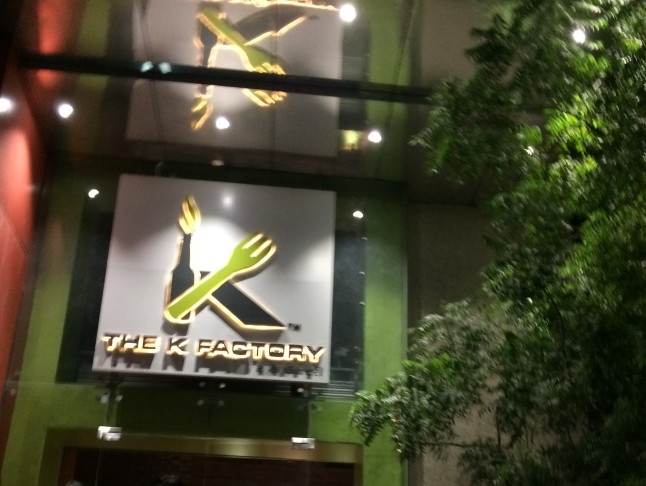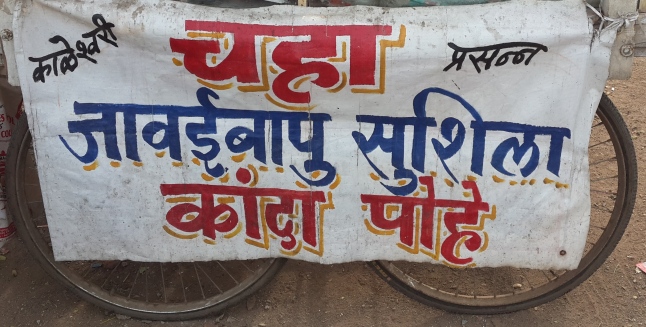मी केरळ राज्यात, ज्याला God’s Own Country असेही म्हणतात, एक-दोनदा फिरलो आहे. दोन्हीवेळेस आधी कोचीला जाऊन मग पुढे गेलो आहे. माझी कोची आणि मग पुढे लक्षद्वीप भेटीबद्दल पूर्वी मी लिहिले आहेच. आज वेलियनाड नावाच्या गावात मी १० दिवस राहिलो होतो आणि आसपास भटकलो होतो, त्याबद्दल लिहिणार आहे.
मी वेलियनाड ह्या अनोळखी गावी जायचे काही कारण नव्हते. ते काही कुठल्याही tourist map वर नाही. मी गेलो होतो ते चिन्मय मिशनच्या Chinmay International Foundation नावाच्या संस्थेत एका अभ्यासक्रमाच्या निमित्ताने. कोची विमानतळापासून वेलियनाड(Veliyanad) हे गाव तसे थोडे लांबच आहे. कोचीला पोहचलो तेव्हा रात्र झाली होती. त्यामुळे वेलियनाडला जाई पर्यंतचा नजारा काही दिसला नाही. मुक्काम केंद्रातच होता. हे गाव म्हणजे आद्य शंकराचार्यांचे मातुल-ग्राम. सकाळी उठून पाहतो तर काय, अतिशय छान अशी केरळी तऱ्हेची घरे जी नक्षीदार लाकडी काम यांनी सजलेली, नारळाची झाडी असलेले टुमदार गाव. ज्या झाडापासून साबूदाणा बनतो, ती Tapioca झाडे बरीच आहेत तेथे. केंद्राचा परिसर देखील असाच रम्य आहे. आद्य शंकराचार्यांचे मातेचे घर, त्यात असलेले स्वामी चिन्मयानंदांचे ध्यानमंदिर, अय्यप्पाचे आणि नाग यक्षी यांचे केरळी मंदिर आहे. एका लाकडी बांधकाम असलेल्या आणि कौलारू छप्पर असलेल्या हॉलमध्ये दररोज सकाळी आणि दुपारी अभ्यासवर्ग असे. पहिल्याच दिवशी पाऊस सुरु झाला. माझ्या एकदम लक्षात आले, की त्या वर्षीचा मान्सुनचा पहिला पाऊस मी अनुभवतो आहे, कारण मी बरोबर जूनच्या पहिल्या आठवड्यात तेथे गेलो होतो आणि मान्सुन सुरु होणार होता.
दररोज सकाळी आणि संध्याकाळी जमेल तसे आम्ही आसपास भटकट असू. पहिल्या दिवशी काही जमले नाही, पण दुसऱ्या दिवशी आम्ही जवळच असलेल्या Peppathy गावात शिवाचे मंदिर पहायला गेलो, तसेच पुढे Pazhur गावातील Perumthikkovil हे नदी काठी असलेल्या बाराव्या शतकातील मंदिर पाहायला गेलो. दुसऱ्या दिवशी सकाळी लवकर उठून Pazhur गावातच पण Muvattupuzhla नदीच्या पलीकडे असलेले नृसिंह स्वामी मंदिर पाहायला गेलो. नंतर कोणीतरी आम्हाला त्या गावातील सुंदरन नावाच्या एका ज्योतिषाकडे देखील घेऊन गेले, ज्याचे भविष्य सांगण्याचे तंत्र वैशिष्ट्यपूर्ण आहे.
तिसऱ्या दिवशी कुठे जावू शकलो नाही. चौथ्या दिवशी दुपारनंतर, Thrippunithura या नावाच्या कोचीच्या उपनगरात Ameda Temple पाहायला गेलो, जे सप्तमातृका मंदिर आहे, तसेच जवळच असलेले Poornathrayessa Temple देखील बघितले जे विष्णूचे मंदिर आहे. केरळ मधील मंदिर स्थापत्य हा वेगळाच विषय आहे. Thrippunithura हे तसे ऐतिहासिक आहे, कोचीन राज्याची ती राजधानी आहे, आणि तेथे Hill Palace नावाचा राजवाडा आणि संग्रहालय आहे जे पाहायला आम्ही परत दुसऱ्या दिवशी तेथे गेलो. आद्य शंकराचार्यांचे जन्मस्थान असलेले कलाडी येथेही गेलो. जवळच असलेल्या Perumbavoor गावात्तील Iringole Kavu जंगलात दुर्गेचे मंदिर आहे तेथेही गेलो. वेलियनाड जवळ Thirumarayoor नावाच्या गावातील रामस्वामी मंदिर पाहायला गेलो. Piravom गावातील एक जुने, पहिल्या शतकातील असे Syrian Church(St Mary’s Cathedral) आणि आत असलेली जुनी चित्रे देखील पाहायला मिळाली.
आमच्या अभ्यासक्रमाच्या शेवटच्या दिवशी संध्याकाळी, चिन्मय मिशनच्या केंद्रात असलेल्या अयप्पा मंदिरात सहस्रदीप कार्यक्रम झाला, ज्यात संपूर्ण मंदिर उजळून निघाले, जे अपूर्व दृश्य होते. नंतर भजनाचा कार्यक्रम झाला. आश्चर्याची गोष्ट म्हणजे, गावात असलेले काही बंगाली कामगार गायनाच्या कार्यक्रमाला आले होते, ज्यांनी बंगाली गीते, बाऊल संगीत, कबीराचे दोहे वगैरे गायली, आणि त्या केरळी वातावरणातील संध्याकाळ अविस्मरणीय ठरली. दुसऱ्या दिवशी आम्हा सर्व सहापाठींनी अजून एक दिवस भटकंती करून पुढे आपापल्या गंतव्य स्थळी जावे असे ठरले आणि त्या प्रमाणे, Thrissur(erstwhile Trichur) जिल्यातील प्रसिद्ध गुरुवायुर मंदिरला भेट दिली. हे मंदिर त्यांच्या हत्तीशाळेसाठी प्रसिद्ध आहे. मंदिराच्या आवारात हत्तीची राहण्याची व्यवस्था आहे. मंदिरातच रात्रभर मुक्काम ठोकला. रात्री उशिरापर्यंत कोणीतरी केरळचा प्रसिद्ध शास्त्रीय नृत्याचा अविष्कार मोहिनीअट्टम् सादर करत होते. आणि नंतर आम्ही अगदी पहाटे पहाटे ३ वाजता कृष्णमंदिराचे दर्शन घेतले. त्यानंतर Thrissur शहरातील Vadakkumnathan Temple जे प्रसिद्ध असे प्राचीन शिवमंदिर आहे त्याला भेट दिली. कोची शहरात किल्ला, जुने चर्च वगैरे पाहून कोची विमानतळावर पुण्याकडे रवाना होण्यास धडकलो.
शेवटला, जाता जाता, चिन्मय मिशन मधील अभ्यासक्रम आणि तेथील खाद्य-भ्रमंती या बद्दल! भारतीय तत्वज्ञान/दर्शनातील क्षेत्रातील न्यायदर्शनाच परिचय हा अभ्यासक्रम जो पुण्यातीलच संस्कृततज्ञ वसिष्ठ नारायण झा यांनी आखलेला, आयोजित केलेला होता. त्याबद्दल मी पूर्वी माझ्या ब्लॉगवर येथे लिहिले आहेच. केरळची जशी मंदिर वैशिष्ठ्यपूर्ण आहेत, तशीच तेथील खाद्य-संस्कृती देखील वेगळीच आहे. त्याबद्दल अगदी थोडेसे. चिन्मय मिशन केंद्रात तेथे आम्हाला सकाळी नाश्त्याला बऱ्याच पुट्टु हा पदार्थ, इडली, सागू, कुर्मा, तेथील इलायची केळी(ती पण कधी कच्ची, तर कधी उकडलेली!), फिल्टर कॉफी सोबत मिळत असे. दोन्ही वेळच्या जेवणात अर्थातच भात, भातच असे. लाल, जाडा भरडा अश्या तांदळाचा भात, पांढरा भात, सांबार, रसम्, भाजी, मस्त ओले खोबरे वगैरे घातलेली, पायसम्, अवियल, कच्च्या केळ्याची भाजी, फणसाची भाजी, गोथांबू पायासम्, उन्नीयप्प्म नावाचे गोड पदार्थ इत्यादी. मी तेथून फिल्टर कॉफी तयार करण्याचे पात्र, तसेच पुट्टु तयार करण्याचे पात्र पुट्टुपात्र घेऊन आलो, आणि अधून मधून केरळची आठवण म्हणून ते पदार्थ करत असतो!
तर अशी ही माझी केरळची offbeat भटकंती, जी टूरिस्ट कंपन्याच्यापेक्षा कितीतरी वेगळी आणि समृद्ध करणारी!






























